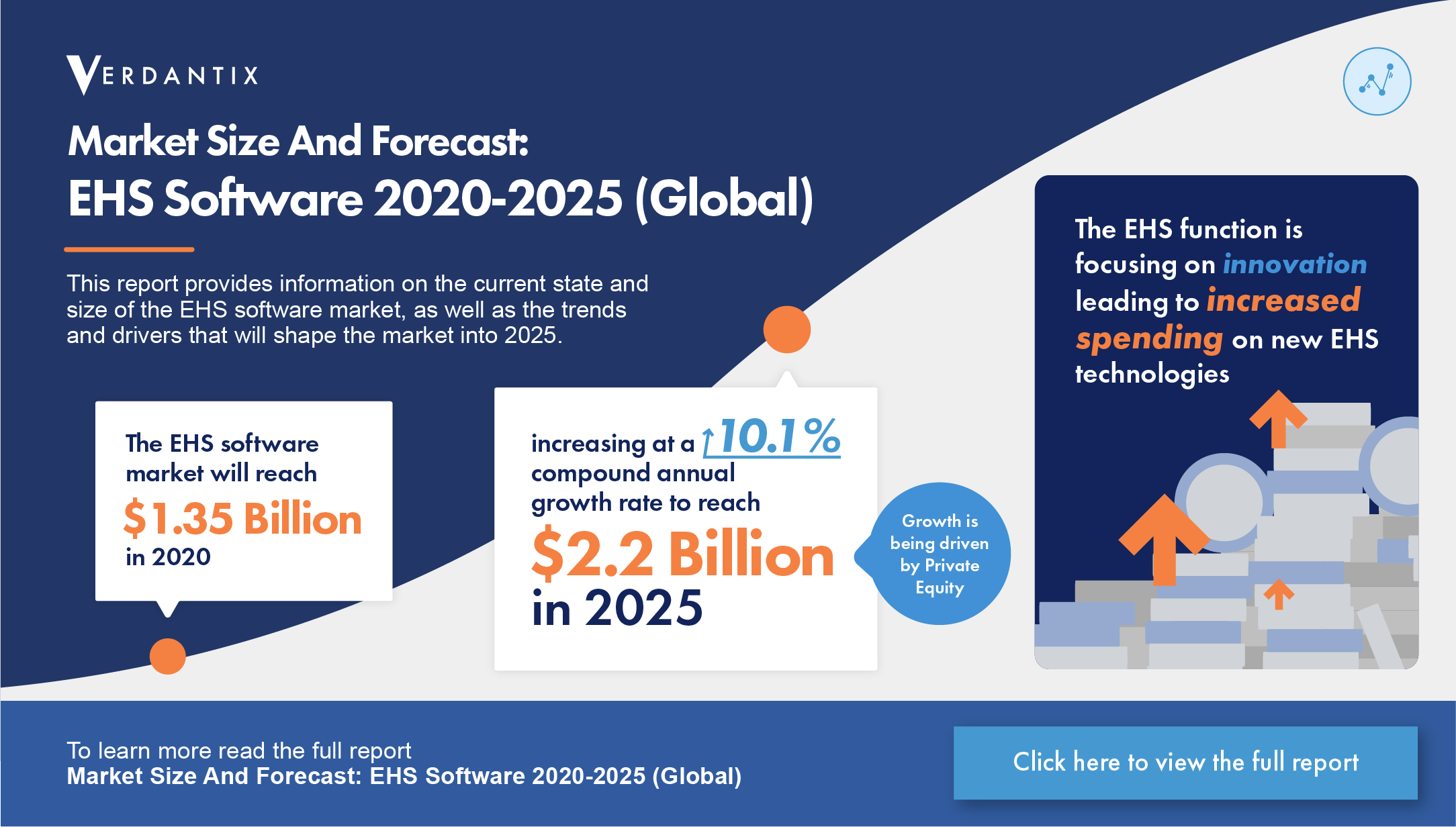London—March 27, 2020. The global market for environment, health, and safety (EHS) software will grow from $1.35 billion in 2020 to $2.2 billion in 2025, according to a new study from independent research firm Verdantix. The forecasted compound annual growth rate of 10% will be driven by private equity and growing customer demands for innovation. Vendors positioned to benefit from this growth include EHS software players such as Enablon, Intelex, Isometrix, and Sphera, as well as private equity funds including Frog Capital, Goldman Sachs, Summa Equity, and Thoma Bravo.

“The market has seen an influx of private equity firms injecting new money into EHS software vendors, which is fuelling product development,” commented Verdantix Senior Analyst Bill Pennington. “With EHS functions increasingly focusing on innovation, such as the continued shift from on-premise to SaaS deployment and an increased presence of dedicated IoT safety platforms, this is driving the appetite for spending on EHS technologies.”
The Verdantix report, “Market Size And Forecast: EHS Software 2020-2025 (Global),” provides vendor executives with all the information they need to assess their market opportunity. Revenue projections find that oil and gas firms will account for 29% of total spend in 2020 at $389 million. Chemicals will comprise 11% of total spend at $145 million and mining and metals (8%) at $113 million. North America will contribute over half (51%) of overall global spend on EHS software at $691 million in 2020, followed by Europe with 25% of spend at $345 million. Between 2020 and 20235, total market growth will vary between 7% and 12%.
“Our analysis indicates that software vendors looking to grow their market share should look to the emerging regions and their growing appetite for EHS software, as well as offering more integrated solutions,” continued Pennington. “IoT and wearable technology has become a focus for EHS managers with vendors developing IoT-centric safety platforms to help effectively consolidate IoT data integrated into EHS software platforms and reduce the amount of IoT devices deployed operationally.”
Read the full report here.
